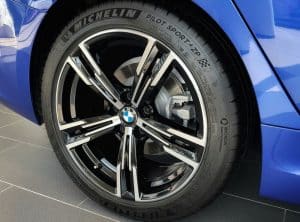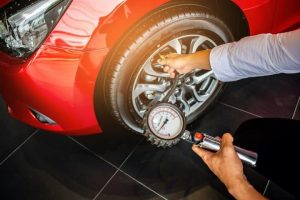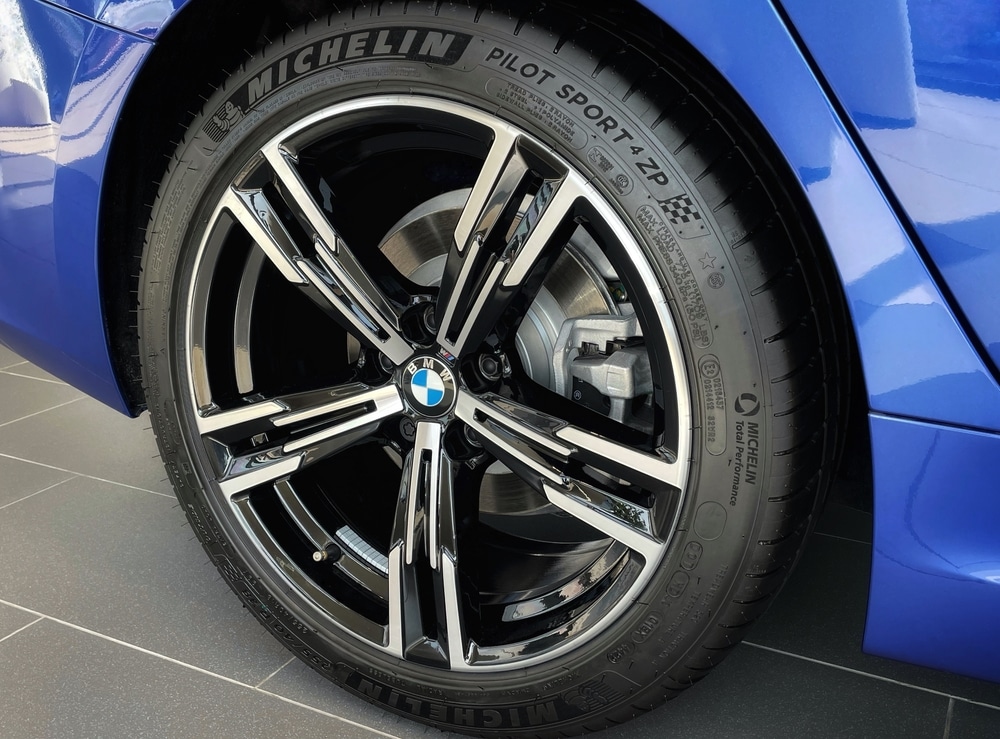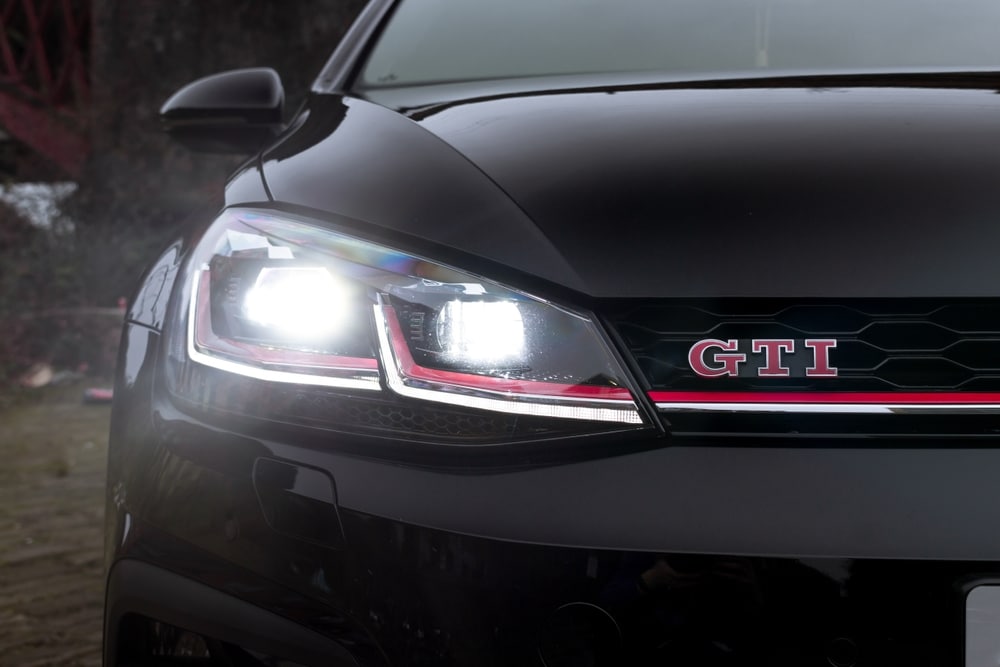BMW Tyre Pressure
Despite being easy, maintaining the correct tyre pressure is a job often overlooked by owners. If you’re a BMW owner, you may be wondering what the correct tyre pressures are for your model. And when you inspect your tyres, what should you be looking for? This guide will cover all you need to know about BMW tyre pressure and tyre maintenance.

How Do Under Inflated Tyres Affect My BMW?
If you drive around in your BMW and have under inflated tyres, it will cause them to become less durable and will wear out quicker, increasing the risk of a puncture. The under inflation will also cause an increase in fuel consumption due to higher roll resistance. Roll resistance is the force that resists the movement of the tyres and your engine needs to work harder. If your tyres are under inflated by just 30%, there is a significant risk of hydroplaning on wet roads too.
Uneven tyre wear also occurs if your tyres are under inflated, which harms handling and grip. Your tyres will be less responsive to hazards on the road and cornering ability will be reduced. Ensure your tyres are properly inflated according to manufacturer guidelines.
Visit South Coast Garage if you are ever stuck with what to do when it comes to tyres and tyre pressures. Our team of BMW experts are on hand ready to assist. We have served the local Eastbourne area for years and have helped hundreds of BMW owners get back on the road safely.
The Recommended Tyre Pressures For Your BMW
Your BMW will have its own recommended tyre pressure as it depends on your model, model year, engine, and tyre size. It also is sometimes suggested by manufacturers to use a different pressure for summer and winter tyres.
For front-engine, front-wheel drive BMWs, your tyre pressures are often higher for the front tyres than they are for the rear. It helps balance weight distribution and compensates for the heavy engine and transmission housed at the front of the vehicle.
If you are not sure where to find your BMW tyre pressures, check your owner’s manual, or inside the driver’s door where you’ll find a plate or sticker. Sometimes your tyre pressures can be found on the fuel filler door too. If you are stuck, do not hesitate to reach out to our BMW experts at South Coast Garage, we can help you with your tyre pressures and top up if yours are under inflated.
The Essential Tools You Need When Checking Your BMW Tyre Pressures
You might not require any tools if your BMW has a built-in Tyre Pressure Monitoring System (TPMS), as the advanced system will warn you if your tyre pressures are too low. Each wheel will have an in-built sensor to constantly measure the tyre pressure, so you don’t have to. It even allows you to check each tyre from the comfort of your driver’s seat.
You can check the tyre pressures on your BMW via the service menu on your iDrive system. Scroll to and select tyre pressures in the vehicle settings to see the pressure of each tyre. Note: This is only available if your BMW is equipped with a Tyre Pressure Monitoring System (TPMS).
If you do not have a TPMS, or prefer the traditional way of checking your tyres, then you can use a pressure gauge. You can buy a tyre pressure gauge in most car parts stores, or you can visit a fuel station where they have tyre inflation machines.
First, you need to remove the valve cap from each tyre you want to check. Then firmly press the pressure gauge onto the exposed valve to obtain your reading.
From here, compare the reading of your tyre to the BMW recommended reading found in your owner’s manual, or on the sticker on your driver’s door sill. If the measured pressure is lower, then top up your tyres with air, if it is higher, then let some air out and remeasure.
Owners make common mistakes when it comes to measuring tyre pressure. The gauge may not be accurately reading the tyre pressure, or the tyres are hot or cold, which throws off the reading, causing inaccuracy. If you are ever in doubt, then reach out to South Coast Garage today and our BMW experts will be able to assist. We have helped so many BMW owners with their tyres, they come to us for our friendly approach and experience.

Is The Tyre Pressure Monitoring System Reliable in My BMW?
In general, yes your Tyre Pressure Monitoring System (TPMS) will give you an accurate tyre pressure reading in your BMW. The TPMS does need to be properly set up and calibrated though. At South Coast Garage, we can perform TPMS calibrations for you.
We specialise in BMW vehicles – servicing, repairing, and maintaining them for owners like you. With an expert team on hand to ensure your TPMS is working properly, we check your tyres and see if they are properly inflated to make sure you’re driving efficiently and safely.
Tyre Pressures and Weather Conditions – Here’s What You Need To Know
External factors such as temperature can affect tyre pressures. Cold weather reduces the pressure in your tyres, whereas hot weather increases it. Typically, tyre pressure is measured in Bar or Pounds Per Square Inch (PSI) and you can find your BMW recommended tyre pressures in your owner’s manual or on a sticker in the door.
Also, when you are driving your BMW throughout the day, your tyre pressures can change. For instance, during fast motorway driving on a hot and dry day, your tyre pressures increase and cause a build-up of heat in the rubber, increasing by up to 10 PSI.
Don’t forget that low tyre pressures can increase fuel consumption and reduce the lifespan of your tyres too. We recommend you check your tyre pressures at least once per month to compensate for any change in temperatures. Reach out to South Coast Garage today if you are unsure about the condition of your tyres, especially when it comes to pressure.
Seven Steps To Maintain Your BMW Tyres To Increase Their Lifespan
Your BMW tyres are an essential part of driving safety, economy, and comfort. At South Coast Garage, we specialise in BMW vehicles and can assist you with your tyre questions and advise you on tyre choice, correct pressures, and condition.
To ensure your tyres are kept in the best condition, follow these tips:
- Inspect your BMW’s tyres: Ensure the safety of your tyres by checking for bulges, cuts, or objects embedded in them that may require attention from a specialist. If you observe a puncture while driving, pull over and switch to your spare wheel as soon as you can.
- Examine the tyre tread on your BMW: There’s a legal minimum tread depth of 1.6mm. If the tread falls below this, you could face a fine of up to £2,500 and receive three points on your licence per wheel. If your BMW’s tyres are nearing or below the 1.6mm limit, it’s advisable to replace them.
- Choose the appropriate tyres: All-weather tyres provide reliable performance throughout the year and are commonly used. However, in certain European countries with more extreme weather conditions, drivers may still need to switch between summer and winter tyres.
- Ensure proper wheel alignment: Incorrect wheel alignment can result in uneven tyre wear, leading to tyre damage, increased fuel consumption, and impacting your control over the vehicle.
- Monitor the maximum load: Overloading your car can lead to excessive tyre wear and compromise vehicle handling. Tyres typically have a load index, and it’s crucial not to exceed this limit.
- Be cautious around kerbs: Bumping into or mounting kerbs without care is a major cause of tyre damage. When parking on the roadside, slow down and manoeuvre carefully to avoid knocking the kerb with your BMW’s tyres.
- Adopt good driving habits: Whenever feasible, avoid heavy braking, accelerate gradually, make smooth transitions, steer clear of bumps, potholes, and road undulations, and reduce speed for speed bumps.
You can put your mind to rest when it comes to tyres in your BMW when visiting us. At South Coast Garage, we can check, replace, and top up your tyres thanks to our specialist team. Give us a call today and book your appointment!



